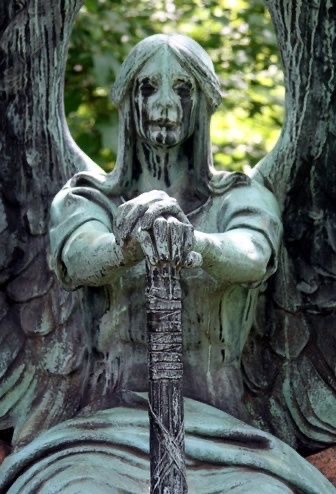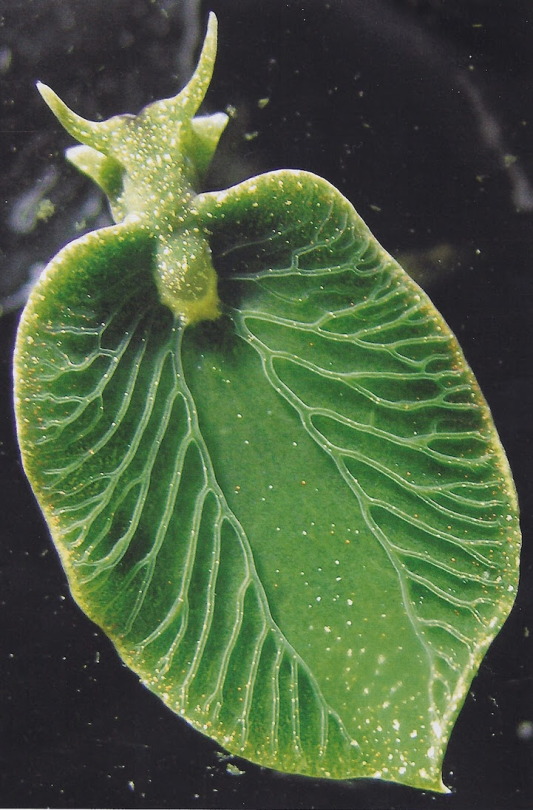This Is A Free Coupon/excuse For You To Infodump On The Current Topic You’re Obsessed With. Take Some
This is a free coupon/excuse for you to infodump on the current topic you’re obsessed with. Take some time away from internet discourse and share with us something you find interesting.

Today I read about Precambrian animals!
The above one is Thectardis, which is an animal so weird we have almost no inclination of how to categorize it. We know it was alive and it was cone shaped. That’s it.
The thing about fossil life from 500+ million years ago is that there often aren’t really any living analogs for it? Many of the animals from that time were sessile, many filter feeders, without much in common with what comes to mind when we think “Animal”—something that moves around and has a brain and thinks. The strata that preserve these animals are very rarely accessible, and these glimpses we have are hard to interpret.
Many of these creatures are known from a single fossil. Many are too weird to interpret or classify even tentatively.
Here’s another organism from that time, Eoandromeda:

Look at this thing. I can’t explain why, but Eoandromeda makes me feel some kind of deep dread. Like...we don’t know what this thing was. We don’t even know if it was an animal. I look at that shape and I want someone to tell me what that thing is. But we don’t know. We don’t have the words for What That Thing Is.
Imagine something so alien, so divergent from the paths life took to the present day, that we can’t look at it and say “That’s a worm” or “That’s a sponge” or “that’s a jellyfish” or...anything. The words for it literally don’t exist, because nothing like it now exists, and we know nothing about it. We’re not looking at different versions of the same categories of creature we have now. We’re looking at something that is too obscure to have a category. We can guess what it might have looked like. But it is so utterly unlike anything that exists now that we know nothing—except that undeniably, it existed.

Namacalathus. Be honest, doesn’t this make you scream inside? Or is it just me? This was a real animal that existed. It doesn’t know or give a fuck what a “snail” or “bird” is.
Learning about dinosaurs is DIFFERENT. We know what bones are. We have them! When we say that sauropod dinosaurs ate plants, we can imagine those plants. We can describe dinosaurs as having a “neck” and “claws” and “legs.” And I think that’s comforting because whatever I feel when I look at Namacalathus is not that.
This one invented muscles! Muscles are okay! I have muscles! That should make me feel better, right!

...Not really! Put it back!
For millions of years these things existed, living their unknowable lives. There was an entire world of these organisms. This was EARTH, our world.
People mostly haven’t heard of these. I think people care less about these strange early creatures because they seem less charismatic, not having brains or doing anything, but I think there is a lot of charisma to the Unknowable Cone Animal, the Dread Spiral, and all the other unsettling animals of the Precambrian.
More Posts from Our-cosy-library and Others
لا أستطيع أن أكتبَ عن دمشق، دون أن يُعرِّشَ الياسمين على أصابعي. ولا أستطيع أن أنطقَ اسمها، دون أن يكتظَّ فمي بعصير .المشمش، والرمان، والتوت، والسفرجل
Nizar Qabbani, A Green Lantern on Damascus’ Door (via fatimahabdullahm)
Ahhh! This is so cool!
To Damascus, years are only moments, decades are only flitting trifles of time. She measures time, not by days and months and years, but by the empires she has seen rise, and prosper and crumble to ruin. She is a type of immortality. Damascus has seen all that has ever occurred on earth, and still she lives. She has looked upon the dry bones of a thousand empires, and will see the tombs of a thousand more before she dies. Though another claims the name, old Damascus is by right the Eternal City.
Mark Twain (via mideastnrthafricacntrlasia)
We got you buddy









Botanic academia
Me

TERBOL, Lebanon — Inside a large freezer room at the International Center for Agricultural Research in the Dry Areas, tens of thousands of seeds are stored at a constant temperature of minus-4 degrees Fahrenheit. After being threshed and cleaned, the seeds are placed inside small, sealed foil packets and stored on rows of heavy, sliding metal shelves.
Some of them may hold keys to helping the planet’s food supply adapt to climate change.
The gene bank can hold as many as 120,000 varieties of plants. Many of the seeds come from crops as old as agriculture itself. They’re sown by farmers in the Fertile Crescent region, where cultivation began some 11,000 years ago. Other seeds were deposited by researchers who’ve hiked in the past four decades through forests and mountains in the Middle East, Asia and North Africa, searching for wild relatives of wheat, legumes and other crops that are important to the human diet.
Continue Reading
Found this chat for you on Tumblr









Elysia chlorotica, also called the “Eastern Emerald Elysia” is a bright green sacoglossa found along the Atlantic coast of North America that's earned the title of “solar-powered sea slug” for its ability to produce its own energy with sunlight and the chloroplasts that it sucks off of algae.
This unusual process, which is similar to photosynthesis, is known as kleptoplasty. Except for a select number of creatures like the adorable “leaf sheep” Costasiella kuroshimae nudibranch, very few non-plant organisms are capable of the phenomenon.

-
 pyrrhura-egregia reblogged this · 1 month ago
pyrrhura-egregia reblogged this · 1 month ago -
 jnm769 liked this · 1 month ago
jnm769 liked this · 1 month ago -
 alexaloraetheris liked this · 1 month ago
alexaloraetheris liked this · 1 month ago -
 eclectichellmouth reblogged this · 2 months ago
eclectichellmouth reblogged this · 2 months ago -
 thepenguisalive7 liked this · 6 months ago
thepenguisalive7 liked this · 6 months ago -
 lotus-duckies reblogged this · 6 months ago
lotus-duckies reblogged this · 6 months ago -
 aloraaki reblogged this · 6 months ago
aloraaki reblogged this · 6 months ago -
 r-u-n-3 liked this · 6 months ago
r-u-n-3 liked this · 6 months ago -
 lotus-duckies reblogged this · 6 months ago
lotus-duckies reblogged this · 6 months ago -
 pikachic reblogged this · 8 months ago
pikachic reblogged this · 8 months ago -
 pikachic liked this · 8 months ago
pikachic liked this · 8 months ago -
 tealcrush reblogged this · 9 months ago
tealcrush reblogged this · 9 months ago -
 tealcrush liked this · 9 months ago
tealcrush liked this · 9 months ago -
 philliamthe23rd liked this · 9 months ago
philliamthe23rd liked this · 9 months ago -
 atg6174 liked this · 9 months ago
atg6174 liked this · 9 months ago -
 sftwareshark reblogged this · 1 year ago
sftwareshark reblogged this · 1 year ago -
 homogranates liked this · 1 year ago
homogranates liked this · 1 year ago -
 edenslice reblogged this · 1 year ago
edenslice reblogged this · 1 year ago -
 i-dont-fucking-know liked this · 1 year ago
i-dont-fucking-know liked this · 1 year ago -
 lutheranarchist liked this · 1 year ago
lutheranarchist liked this · 1 year ago -
 kiloueka reblogged this · 1 year ago
kiloueka reblogged this · 1 year ago -
 collapsinghorizons reblogged this · 1 year ago
collapsinghorizons reblogged this · 1 year ago -
 kiloueka liked this · 1 year ago
kiloueka liked this · 1 year ago -
 celemie liked this · 1 year ago
celemie liked this · 1 year ago -
 writers-block-solutions reblogged this · 1 year ago
writers-block-solutions reblogged this · 1 year ago -
 parasiticmoth reblogged this · 1 year ago
parasiticmoth reblogged this · 1 year ago -
 gribffin reblogged this · 1 year ago
gribffin reblogged this · 1 year ago -
 gribffin liked this · 1 year ago
gribffin liked this · 1 year ago -
 jaws3 reblogged this · 1 year ago
jaws3 reblogged this · 1 year ago -
 bleepbloopclub liked this · 1 year ago
bleepbloopclub liked this · 1 year ago -
 darkestday828 reblogged this · 1 year ago
darkestday828 reblogged this · 1 year ago -
 darkestday828 liked this · 1 year ago
darkestday828 liked this · 1 year ago -
 formothervolcanobakemeat reblogged this · 1 year ago
formothervolcanobakemeat reblogged this · 1 year ago -
 jirzetta liked this · 1 year ago
jirzetta liked this · 1 year ago -
 wyvernseeker reblogged this · 1 year ago
wyvernseeker reblogged this · 1 year ago -
 whitemistwalker liked this · 1 year ago
whitemistwalker liked this · 1 year ago -
 recordmcqueen liked this · 1 year ago
recordmcqueen liked this · 1 year ago -
 tsunderefairy reblogged this · 1 year ago
tsunderefairy reblogged this · 1 year ago -
 tsunderefairy liked this · 1 year ago
tsunderefairy liked this · 1 year ago -
 lotus-duckies reblogged this · 1 year ago
lotus-duckies reblogged this · 1 year ago -
 sazaraki liked this · 1 year ago
sazaraki liked this · 1 year ago -
 tigress23456-blog liked this · 1 year ago
tigress23456-blog liked this · 1 year ago -
 ori-stole-the-cheese-again reblogged this · 1 year ago
ori-stole-the-cheese-again reblogged this · 1 year ago -
 ori-stole-the-cheese-again liked this · 1 year ago
ori-stole-the-cheese-again liked this · 1 year ago -
 alenchikova liked this · 1 year ago
alenchikova liked this · 1 year ago -
 slowmo-yo-yo liked this · 1 year ago
slowmo-yo-yo liked this · 1 year ago
Here I share some scientific, artistic, literary and more material that I find interesting and important. I'm 30, studied biology in the University of Damascus. هنا اترجم بعض المقالات و المواد العلمية و الادبية و المواضيع التي اجدها مهمة و مثيرة للاهتمام.عمري 30 سنة, ادرس علم احياء بجامعة دمشق
80 posts